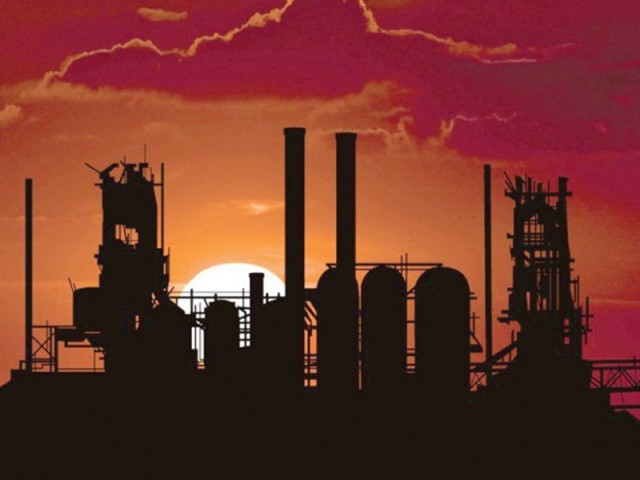LSM growth surges to 15-year high of 9%
Expansion led by strong performance in textile, food, beverages, automobile sectors

In the midst of the Covid-19 pandemic, the large scale manufacturing (LSM) sector recorded 15-year high growth of 9% during the first nine months (Jul-Mar) of the current fiscal year, ending on June 30, with textile, food, beverages and automobile sectors leading the growth.
“This is the highest period-wise growth since FY07,” stated the Economic Survey 2020-21 released on Thursday.
“Broad-based growth in LSM originated from strong performance of textile, food, beverages and tobacco, non-metallic mineral products and automobile.”
In the last week of May, the government projected growth of 9.29% for large scale manufacturing for full fiscal year 2020-21.
Last year, it had fixed a target to achieve negative growth of 2.5% for the sector during the outgoing financial year.
To recall, the LSM sector reported negative growth of 5.1% after a gap of 11 years during the first nine months of FY20 amid pandemic miseries.
"The government envisaged the Covid-19 situation well in time and adopted requisite measures such as resumption of businesses well before time, smart lockdowns, relief to export-oriented industries and construction and industrial packages,” the survey said. “These measures reversed the scenario and LSM emerged as one of the most resilient sectors during the pandemic."
Read: Pakistan beats key growth targets in FY21
Successful vaccination drive across the country played a significant role in mitigating virus uncertainty and the business community took a sigh of relief. Furthermore, well-coordinated fiscal and monetary policies also bode well for future prospects of manufacturing.
The revival of large scale manufacturing sector helped the entire manufacturing sector rebound. A robust manufacturing sector promotes domestic production, exports and generates employment and stimulates the overall growth of an economy.
“In Pakistan, manufacturing sector contributes 12.79% to gross domestic product (GDP) and employs 16.1% of the country's labour force.”
The share of LSM in manufacturing sector amounts to 76.1% while it makes up 9.73% of overall GDP. The share of small scale manufacturing (SSM) was recorded at 16.6% in the manufacturing sector and 2.12% in GDP. The third and the last component of the manufacturing sector, the slaughtering, accounts for 7.4% in manufacturing and 0.94% in GDP.
LSM sub-sectors
Textile sector has the highest weight of 20.91 in the Quantum Index of Manufacturing (QIM) thus it has a significant impact on overall performance of LSM.
Textile production increased 5.9% during July-March FY21 compared to a decline of 2.58% in the corresponding period of last year.
"A major jump originated from woollen segment production that may be associated with the projections of early onset of winter season by international agencies,” it said.
Likewise, the pandemic proved to be a blessing in disguise for garment manufacturers as they scored bulky export orders from European and American markets.
Cotton yarn production and cotton cloth have also contributed well in the wake of government support including tax refunds and duty drawbacks.
Food, beverages and tobacco sub-sector has the second highest weight of 12.37 in QIM. This sector bounced back with 11.73% increase against a decline of 1.69% last year. "Sugar, cigarette and wheat milling grew significantly which boosted the sector," the survey said.
Sugar production increased due to early crushing of sugarcane on the back of domestic shortage of the commodity and subsequent need for imports. Furthermore, government increased the wheat support price and offered subsidy on inputs which pushed up wheat production and wheat milling units. "However, cooking oil and vegetable ghee production remained subdued due to the price hike of a key input, palm oil."
Coke and petroleum production expanded 12.71% against a double digit contraction of 17.54% last year. Production of petrol, furnace oil and diesel grew significantly as demand spurred from resumption of transportation activities accompanied by robust sales of automobiles. In the wake of gas shortages, use of furnace oil for electricity generation has increased the fuel’s demand.
Read more: NEC approves 4.8% economic growth target for FY22
Automobile sector witnessed broad-based growth of 23.38% against a decline of 37.66% last year. "Reduced interest rate, stable exchange rate and huge investments by new and existing players are having a positive impact on this segment and enhancing competition."
Iron and steel production inched up by 1.66% during July-March FY21 as compared to a dip of 7.96% in the same period last year.
Billets/ingots, mainly used in the construction industry, grew by 37.2% as compared to contraction of 14.6% last year. The government has announced multiple incentives for the construction sector which have started bearing fruits.
Fertiliser production grew by 5.69% against 5.81% last year. This performance is mainly attributed to the nitrogen fertilisers which increased by 4.13%. Subsidies offered by the government’s for the fertiliser sector incentivised manufacturers to expand capacity and upgrade plants by offering gas at lower rates.
The electronics segment exhibited lacklustre performance and plunged 20.77% against a slump of 15.58% in the corresponding period of previous year.
Pharmaceuticals witnessed double digit growth of 12.57% during July-March FY21 against 5.29% contraction last year. Output of non-metallic mineral products surged 24.31% while engineering products and leather goods reported decline of 25.53% and 38.26%, respectively.
In addition, paper and board production decreased by 0.6% and rubber products’ output declined by 12.92% during July-March FY21.
Published in The Express Tribune, June 11h, 2021.
Like Business on Facebook, follow @TribuneBiz on Twitter to stay informed and join in the conversation.



















COMMENTS
Comments are moderated and generally will be posted if they are on-topic and not abusive.
For more information, please see our Comments FAQ